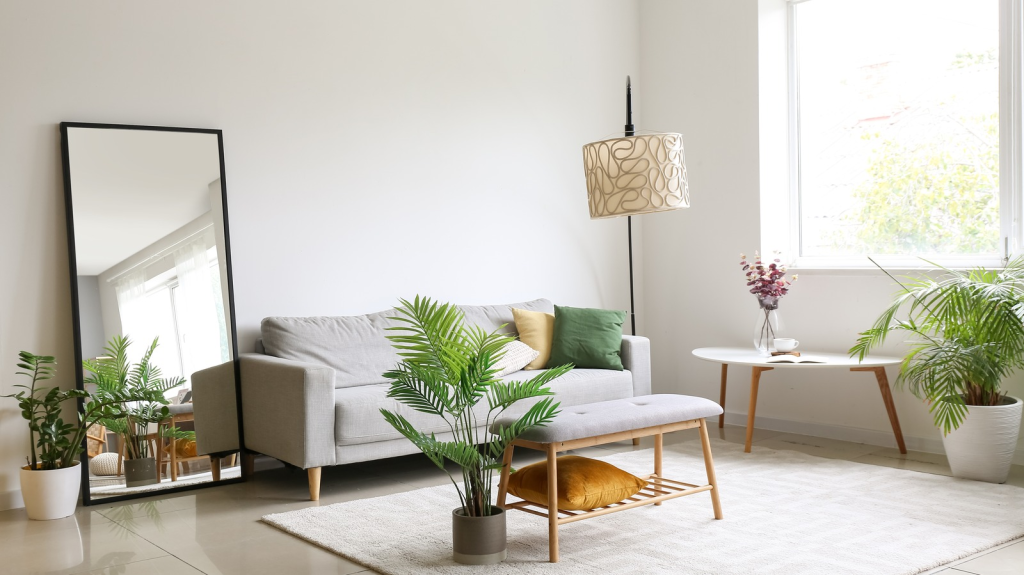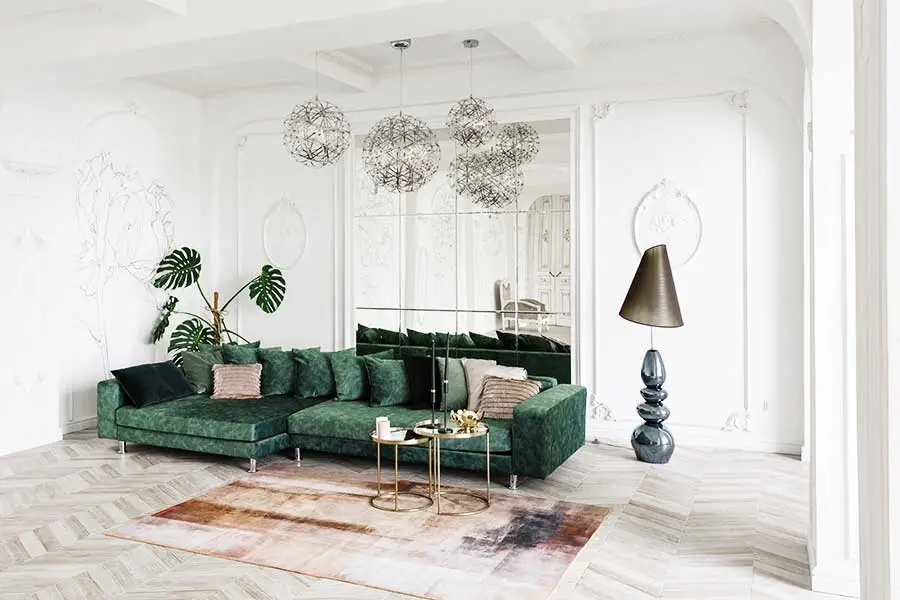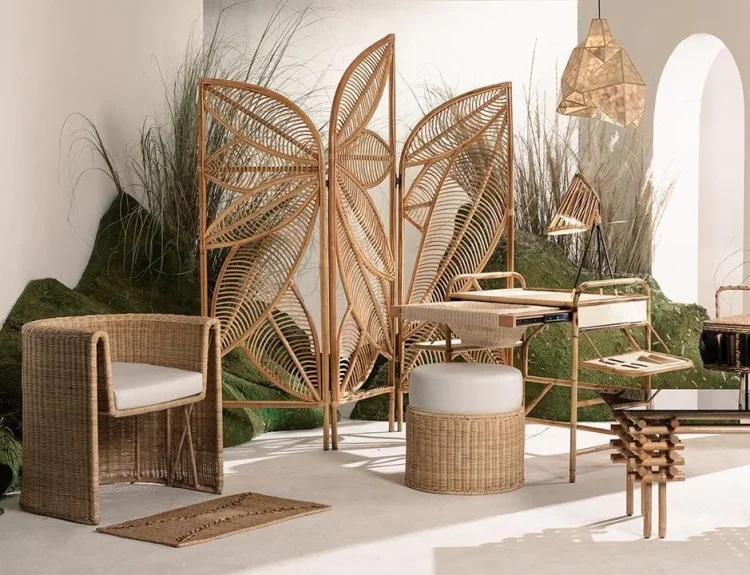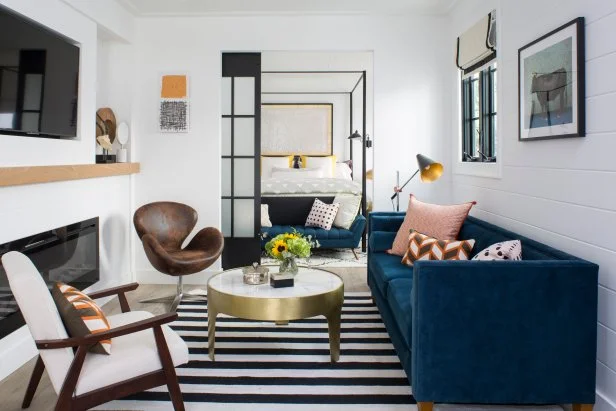Mirrors have long been a trusted design element for enhancing the sense of openness in a space. They not only reflect physical surroundings but also reshape how we perceive them, turning small or dim interiors into areas that feel lighter, more spacious, and more inviting. When applied with purpose rather than randomly hung, mirrors can act almost like architectural features — altering proportions, redirecting light, and changing how energy flows throughout a room.
Why Mirrors Are Essential in Interior Design
Mirrors are more than just decorative pieces; they are functional tools that can change the way a room behaves. The illusion of space they create is based on simple visual psychology. When a mirror reflects an opposite wall or window, the eye interprets the reflection as a continuation of the room rather than its boundary. This effect is subtle yet powerful: a narrow hallway seems less claustrophobic, a small bedroom feels more open, and a compact living area can appear as though it has additional square footage.
Another equally valuable benefit is their ability to manipulate light. Dark corners, shaded walls, and interiors without enough natural windows often feel heavy and enclosed. Mirrors can redirect daylight from existing windows or even amplify the glow of artificial lamps, making a single source of light seem as though it is coming from multiple directions. As a result, rooms become visually softer, warmer, and more balanced without adding any extra fixtures.
Choosing the Right Mirrors for Your Space

Not every mirror will work in every setting. The size, shape, and framing each influence the final result. Larger mirrors produce stronger spatial effects. For example, an oversized floor-to-ceiling mirror can effectively double the visual height of a wall, whereas several small mirrors may simply act as accents rather than tools of expansion.
Shape determines how the room feels emotionally. Rectangular and square mirrors reinforce a structured, orderly aesthetic, while circular or irregular shapes introduce softness and movement. Vertical mirrors tend to make ceilings seem higher, which is useful in older apartments or basements with limited height. Horizontal ones stretch a wall visually, which helps short, boxy rooms appear longer.
Frames are just as influential. Heavy or ornate frames can dominate a space, turning the mirror into a bold statement piece rather than a subtle design enhancer. Thin metal or frameless designs disappear more easily into the wall, allowing the reflection itself to be the focus rather than the object. This is often the preferred choice for small spaces where every inch counts.
Strategic Mirror Placement to Expand Space
Even the most beautiful mirror will fail to improve a room if placed without intention. Positioning is the true secret to maximizing its effect. Placing a mirror directly opposite a window is one of the simplest ways to increase both light and perceived depth. The reflection pulls in outdoor scenery—trees, sky, or even city views—essentially duplicating the window’s presence and extending the boundaries of the room.
In areas where windows are not available, mirrors can still add dimension. Hanging one behind a central furniture piece, such as a sofa, bed, or dining table, creates an impression of greater depth and gives that area an anchor point. A single, well-sized mirror can even become the primary focal point in minimalist spaces, where too many smaller decorations would otherwise feel cluttered.
Brightening Dark Corners with Mirrors

Low-light spaces can feel smaller and heavier than they are. By using mirrors to bounce artificial lighting, you can reduce those shadows and distribute brightness more evenly. Placing a mirror so that it reflects a nearby lamp effectively doubles that lamp’s reach. The same concept applies to wall sconces or even candlelight, which can create a softer, layered glow when reflected.
Hallways and narrow transitional areas particularly benefit from this approach. A mirror at the end of a hallway can visually extend its length and prevent it from feeling closed-in. In windowless entryways, mirrors above a console table can work alongside overhead lighting to create a welcoming first impression rather than a dim, confined atmosphere.
Common Mistakes to Avoid When Using Mirrors
One of the most common errors is ignoring what the mirror will reflect. A poorly positioned mirror might double the appearance of cluttered shelves, emphasize electrical cords, or highlight unattractive parts of the room. It’s important to check the reflection from different angles before finalizing its placement.
Another frequent mistake is using too many small mirrors in an attempt to fill a wall. Rather than enlarging a space, this can create visual noise and break the illusion of depth. Balance is key: fewer, larger pieces almost always produce better results than numerous smaller ones that compete for attention.
Mirror Decorating Ideas for Every Room
Mirrors are versatile enough to enhance nearly every area of the home. In living rooms, an oversized mirror above a mantel or behind a sofa not only reflects more light but also adds elegance without overwhelming the space. Bedrooms benefit from tall mirrors placed near wardrobes or doors; they serve a practical purpose for dressing while simultaneously making the room appear larger. Bathrooms—especially small ones—can be dramatically improved with a single mirror that spans the width of the vanity wall, instantly doubling the sense of space and brightness.



